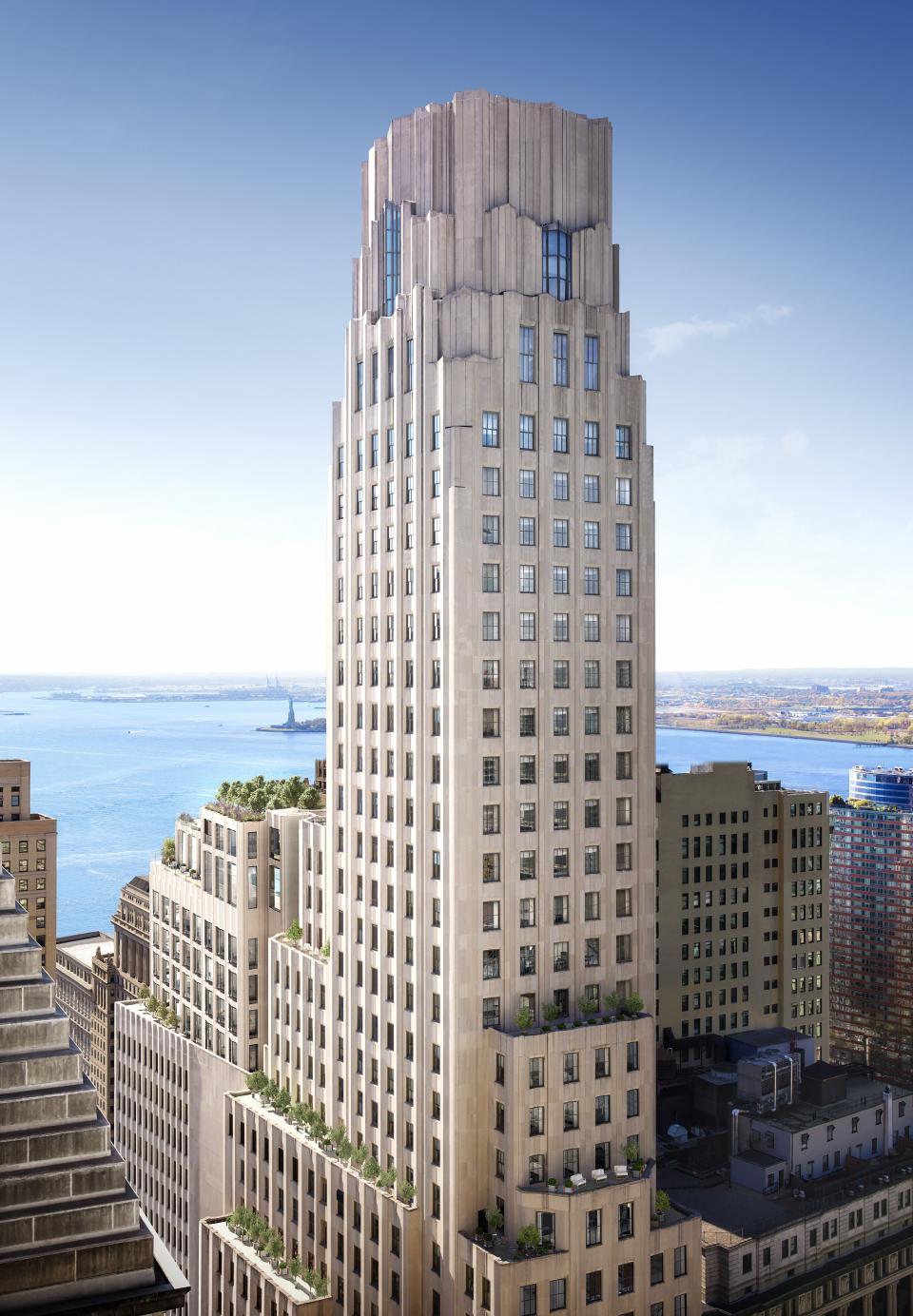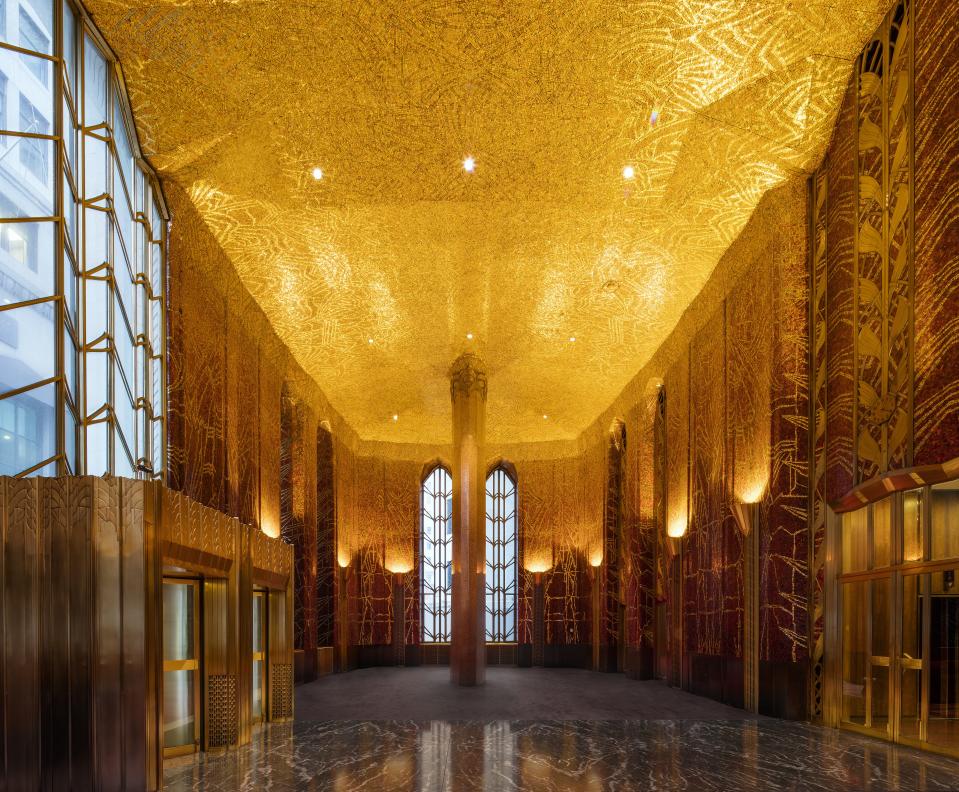Behind the Painstaking Restoration of a Hidden Art Deco Gem on Wall Street
Why isn’t One Wall Street more internationally renowned? This Ralph Walker–designed Art Deco tower was completed in 1931—the same year as the Empire State Building, and the year after the Chrysler Building opened. It exhibits a stately beauty and similar design flair as its better-known contemporaries.
One answer might be the address, which confined the building’s use to banking until recently. In 2016, developer Macklowe Properties obtained permission from the Landmarks Preservation Commission to convert it to residential and retail use—the last such “Ralph Walker redevelopment” opportunity of this kind. Inside, you will soon be able to discover some of the most sumptuous interior features in New York City, if not the world.

Ralph Walker designed the 654-foot-tall tower to create rippling effects as sunlight hits the carved limestone drapery. The tower tapers gracefully, and the setbacks now allow for private terraces at 47 of the 566 new condominiums. On the 52nd-floor former executive lounge level, a scalloped mother-of-pearl ceiling will be showcased by a triplex penthouse that also features rooftop access.

The finest interior gem, however, is the street-level Red Room, a 33-foot-high space decorated with 13,000 square feet of mosaic tiles in oxbloods, oranges, and shimmering golds, all designed by the groundbreaking muralist Hildreth Meière. Once a banking hall, the Red Room will likely become a grand new retail space, perhaps suited to a high-end jeweler, with its doors expected to open in 2021.
The restoration of the Red Room has been painstaking. "Much of it was intact and so this was a face-lift rather than a full-blown restoration," comments Macklowe Senior Project Manager Joseph Bosco, "however we’ve had to use nonchemical, nonabrasive techniques to clean the tiles very, very carefully, so as not to risk damage."

Good fortune came in finding an unopened box of several thousand original tiles in the building’s basement. They were supplied by the Ravenna Mosaic Company, an outgrowth of the same Berlin firm that supplied tiles for the Golden Hall at Stockholm City Hall in Sweden. Fortunate too was the ability to reuse some of the lighting fixtures in the Red Room’s ceiling for the sprinkler system required by the current building code (rather than needing to make new holes in the tiling). Soon, the public will be able to experience the results. "My grandmother would be so thrilled," says Hildreth Meière Dunn, granddaughter of room's designer, Hildreth Meière (1892–1961).
Originally Appeared on Architectural Digest

